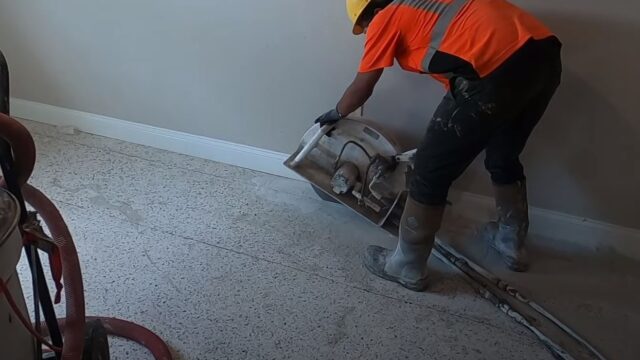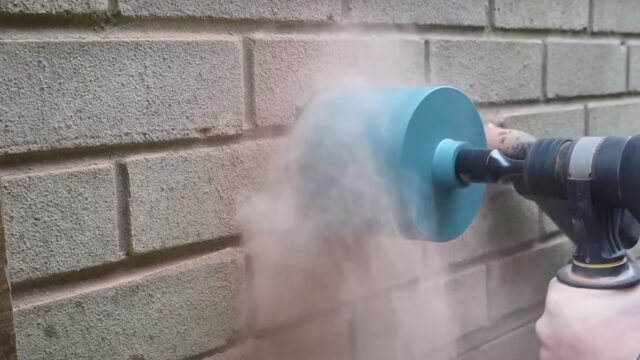Silica Dust: The Invisible Threat
Silica dust is one of the primary hazards when cutting concrete. When concrete is cut, it releases fine particles known as respirable crystalline silica. Inhaling these particles can lead to severe respiratory conditions like silicosis. It’s essential to understand the risks and take preventative measures to protect oneself and the surrounding environment.
Types of Concrete Cutting Tools: Making the Right Choice
Auckland homeowners embarking on renovations often ponder the best tools for concrete cutting. The primary options include:
- Diamond Concrete Saws: Often preferred for their precision, these saws make clean cuts and reduce the amount of dust generated.
- Concrete Chainsaws: With diamond-tipped chains, they offer deep cutting capabilities and are ideal for square corner cuts.
- Hydraulic and Pneumatic Saws: These are powerful tools used mainly for larger projects.
- Masonry Saws: Typically used for smaller jobs, they are portable and user-friendly.
The choice of tool can influence the amount of dust generated, so homeowners should research or consult with Auckland concrete cutters for advice tailored to their specific project.
Auckland Council Bylaw Requirements and Suburb-Specific Regulations
In Auckland, concrete cutting is subject to specific regulations to protect both workers and the environment. In Ponsonby, for instance, local guidelines under Code X1234 advocate for wet cutting methods, which suppress dust. Meanwhile, in Ellerslie, Bylaw Y5678 dictates specific hours when concrete cutting activities can be performed to reduce noise disturbances. Familiarising oneself with local bylaws can help avoid penalties and ensure a smoother project flow.
Safety First: Protective Measures and Gear
Beyond selecting the right tool, it’s vital to invest in safety. Concrete cutters and DIY enthusiasts alike should consider:
- Dust Suppression: Using water or cutting wet can reduce dust emissions significantly.
- Respirators: Ensure they are designed to filter out silica dust particles.
- Protective Eyewear: Keeps dust and debris away from eyes.
- Hearing Protection: Especially if using loud cutting machinery.
- Regular Tool Maintenance: Ensures efficient operation and minimises dust generation.
Cost Implications in Auckland
When planning a concrete cutting project, homeowners should be aware of various costs. The hiring or purchase of equipment, safety gear, and potential fines from non-compliance with regulations can all impact the budget. The average concrete cutting cost in Auckland varies based on the tool’s type and project size. Reaching out to reputable concrete cutting solutions or concrete cutting hire services can offer a clearer picture of potential expenses.
Wrap Up
Navigating the challenges of concrete cutting in Auckland requires a blend of knowledge about potential hazards, understanding local bylaws, and making informed decisions about tools and safety measures. By staying informed and prioritising safety, Auckland homeowners can ensure their renovation projects proceed without a hitch.
Key Takeaways:
Silica Dust Danger: Cutting concrete releases respirable crystalline silica, a major health hazard that can lead to severe respiratory conditions when inhaled.
Tool Selection Matters: The type of concrete cutting tool chosen, from diamond concrete saws to masonry saws, affects the amount of dust generated and the precision of the cut.
Local Bylaws are Crucial: Different Auckland suburbs, such as Ponsonby and Ellerslie, have specific regulations and codes related to concrete cutting. Compliance ensures projects run smoothly and without penalties.
Safety is Paramount: Utilising dust suppression methods, wearing protective gear like respirators and eyewear, and ensuring regular tool maintenance are essential safety measures.
Cost Considerations: Beyond tool choice, factors like safety gear, adherence to regulations, and potential fines for non-compliance can influence the overall cost of a concrete cutting project in Auckland.
Common Mistakes Cutting Concrete
- Inadequate Safety Gear: Neglecting to wear essential safety equipment, such as dust masks, safety goggles, and ear protection during concrete cutting exposes workers to potential injuries and health issues.
- Overlooking Silica Dust Controls: Not using water or dust extraction systems allows dangerous silica dust to become airborne, risking respiratory ailments.
- Using Incorrect Blades: Using the wrong type or a dull blade can lead to inefficient cutting and potential tool damage.
- Skipping Maintenance: Failing to maintain and clean cutting tools after each use can decrease their lifespan and compromise safety.
- Not Checking Local Regulations: Ignoring local Auckland bylaws and not securing the necessary permits can result in fines and project delays.
- Poorly Planned Cuts: Not marking out the cut area accurately or failing to check the area for obstructions like rebar or utilities can compromise the quality of the cut.
- Forgetting to Check Blade Depth: Not setting the blade to the correct depth can lead to incomplete or overly deep cuts, both of which are problematic.
- Failing to Secure the Work Area: Not barricading or marking the work zone can expose bystanders to potential hazards.
- Not Preparing for Waste Disposal: Overlooking the need for appropriate concrete waste disposal can lead to environmental hazards and potential fines.
- Over-reliance on DIY: Assuming concrete cutting is a simple DIY task and not hiring professional Auckland concrete cutters when needed can result in inefficient work and potential safety risks.


